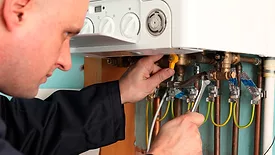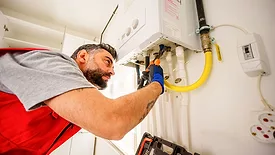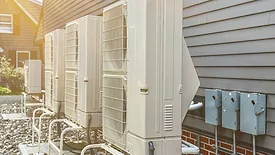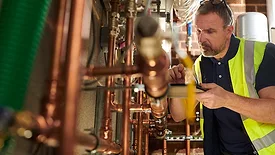John Siegenthaler: Hydronics Workshop
Hydronics Workshop | John Siegenthaler
Advanced ways injection mixing can manage temperature, protect equipment, and stabilize modern hydronic systems.
Read More
Hydronics Workshop | John Siegenthaler
Injection mixing revisited: part one
Injection mixing remains one of the most adaptable and underutilized methods in hydronic system design.
November 17, 2025
Hydronics Workshop | John Siegenthaler
How mismatched loads in a dual-temperature heat pump system can limit performance
Toggle time
October 8, 2025
Hydronics Workshop | John Siegenthaler
Methods from Millinocket: One town in Maine is leading the way in hydronics technology and transactive energy management
September 18, 2025
Hydronics Workshop | John Siegenthaler
Using antifreeze vs. water in hydronic circuits
What’s the difference?
August 4, 2025
Hydronics Workshop | John Siegenthaler
How to integrate a heat pump with a boiler for dual temperature hydronic heating and cooling
Delivering expectations
July 2, 2025
Hydronics Workshop | John Siegenthaler
Rethinking Heat Transfer: Why 'Natural' Isn't Always Ideal for Air-to-Water Systems
As air-to-water heat pumps replace boilers in North American hydronic systems, designers must rethink traditional approaches to heat transfer, or risk costly and inefficient installations.
June 16, 2025
Hydronics Workshop | John Siegenthaler
Using hydronics to leverage time-of-use electrical rates
Buying low
May 2, 2025
Hydronics Workshop | John Siegenthaler
Build what you need: Availability and customization of heat pump systems opens doors of possibilities
April 2, 2025
Hydronics Workshop | John Siegenthaler
Be prepared to advocate for hydronic-based heat pump systems
Different strokes.
March 9, 2025
Keep your content unclogged with our newsletters!
Stay in the know on the latest plumbing & piping industry trends.
JOIN TODAY!Copyright ©2025. All Rights Reserved BNP Media.
Design, CMS, Hosting & Web Development :: ePublishing











